El VIH y su transmisión perinatal: Las cifras
La mayoría de las personas con el VIH que dan a luz en los Estados Unidos no transmiten el VIH a sus bebés. No sabemos exactamente cuántas personas con el VIH dan a luz anualmente en los Estados Unidos. Los datos parecen indicar que la cifra es inferior a 5000.

*Incluye los diagnósticos de infección por el VIH atribuidos a la transmisión perinatal en adultos, adolescentes y niños.
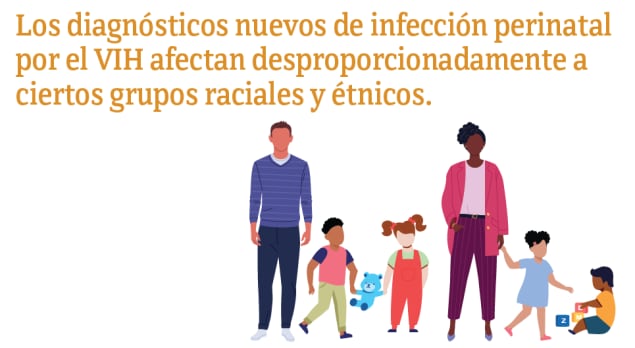
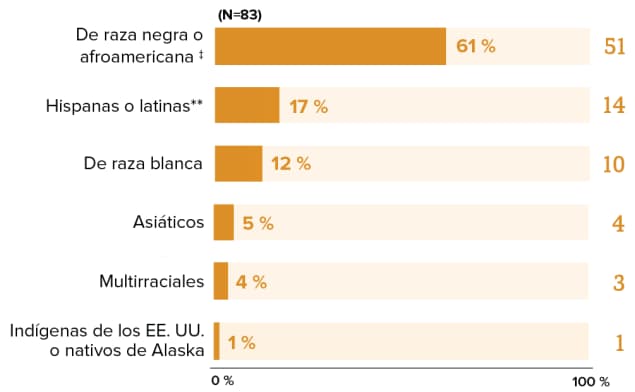
* En el 2019, no hubo casos de VIH perinatal entre las personas nativas de Hawái y de otras islas del Pacífico.
† Incluye los diagnósticos de infección por el VIH atribuidos a la transmisión perinatal en adultos, adolescentes y niños. Los datos se ajustaron estadísticamente para contabilizar la categoría de transmisión faltante.
‡ De raza negra se refiere a personas que descienden de cualquiera de los grupos raciales negros de África. Afroamericano/a es un término que a menudo se usa para referirse a los estadounidenses de ascendencia africana que tienen ancestros en América del Norte.
** Las personas hispanas o latinas pueden ser de cualquier raza.
Fuente. CDC. Diagnoses of HIV infection in the United States and dependent areas, 2019. HIV Surveillance Report 2021;32.
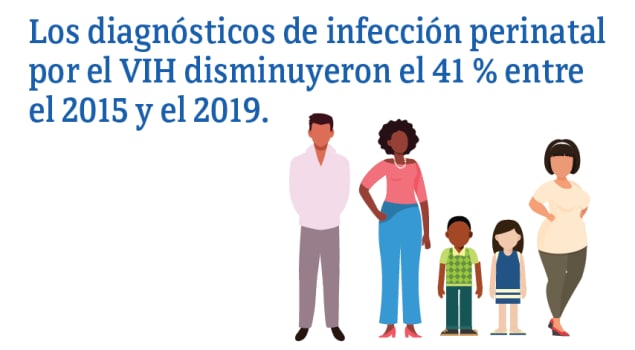
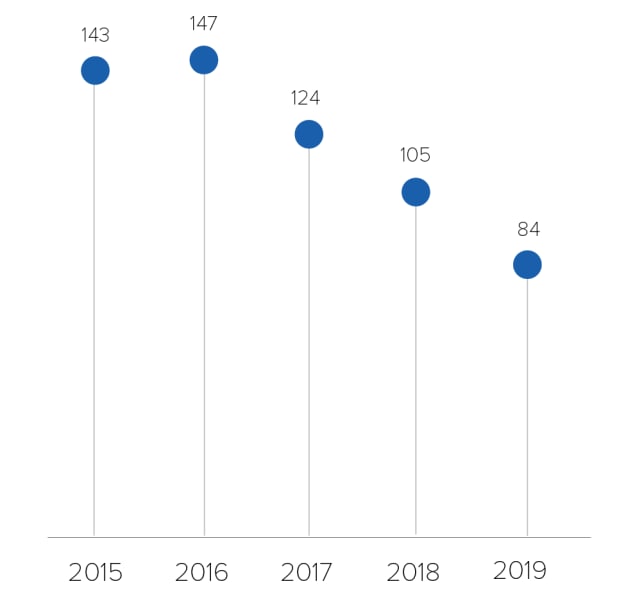
*Incluye los diagnósticos de infección por el VIH atribuidos a la transmisión perinatal en adultos, adolescentes y niños.
Fuente: CDC. Diagnoses of HIV infection in the United States and dependent areas, 2019. HIV Surveillance Report 2021;32.

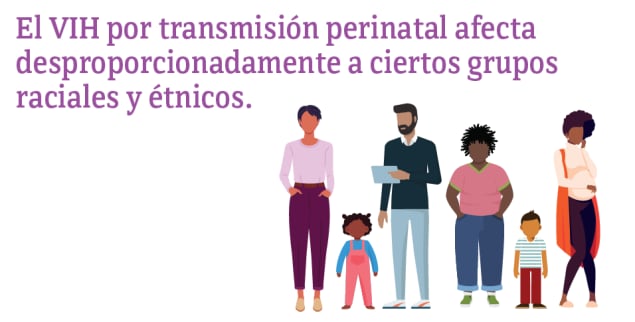
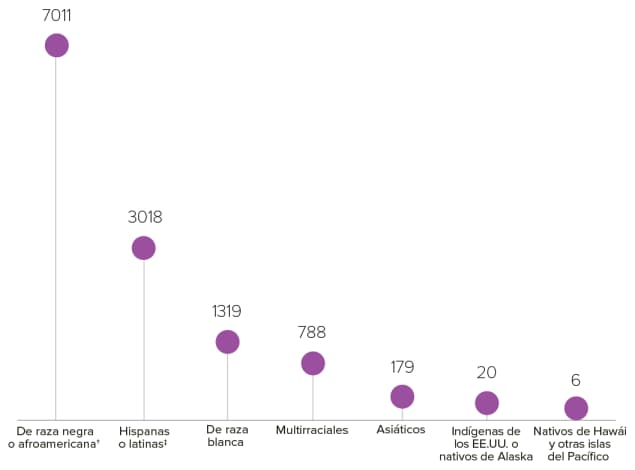
*Incluye a adultos, adolescentes y niños de menos de 13 años.
†Negros se refiere a personas que descienden de cualquiera de los grupos raciales negros de África. Afroamericano/a es un término que a menudo se usa para referirse a los estadounidenses de ascendencia africana que tienen ancestros en América del Norte.
‡Las personas hispanas o latinas pueden ser de cualquier raza.
Fuente: CDC. Diagnoses of HIV infection in the United States and dependent areas, 2019. HIV Surveillance Report 2021;32.
- CDC. Diagnoses of HIV infection in the United States and dependent areas, 2019. HIV Surveillance Report 2021;32.
- CDC. Monitoring selected national HIV prevention and care objectives by using HIV surveillance data—United States and 6 dependent areas, 2018. HIV Surveillance Supplemental Report 2020;25(2).
- Nesheim SR, FitzHarris LF, Lampe MA, et al. Reconsidering the number of women with HIV infection who give birth annually in the United States. Public Health Rep 2018;133(6):637-43. PubMed abstract.
- Little KM, Taylor AW, Borkowf CB, et al. Perinatal antiretroviral exposure and prevented mother-to-child HIV infections in the era of antiretroviral prophylaxis in the United States, 1994-2010. Pediatr Infect Dis J 2017;36(1):66-71. PubMed abstract.
- Panel on Treatment of HIV During Pregnancy and Prevention of Perinatal Transmission. Recommendations for use of antiretroviral drugs during pregnancy and interventions to reduce perinatal HIV transmission in the Unites States.
- Townsend CL, Cortina-Borja M, Peckham CS, et al. Low rates of mother-to-child transmission of HIV following effective pregnancy interventions in the United Kingdom and Ireland, 2000–2006. AIDS 2008;22(8):973-81. PubMed abstract.
- CDC. Achievements in public health: reduction in perinatal transmission of HIV infection—United States, 1985–2005. MMWR 2006;55(21):592-7.
- Fleming PL, Lindegren ML, Byers R, et al. Estimated number of perinatal HIV infections, U.S., 2000. Poster presented at: XIV International AIDS Conference; July 7-12, 2002; Barcelona, Italy.
- Whitmore SK, Zhang X, Taylor AW, et al. Estimated number of infants born to HIV-infected women in the United States and five dependent areas, 2006. J Acquir Immune Defic Syndr 2011;57(3):218-22.
- Valverde E, Short W, Brady K, et al. HIV medical provider’s assessment of the reproductive plans of women receiving HIV care: medical monitoring project provider survey, 2009. Paper presented at: 6th International AIDS Society Conference on HIV Pathogenesis, Treatment and Prevention; July 17-20, 2011; Rome, Italy.
- Whitmore SW, Taylor AW, Espinoza L, et al. Correlates of mother-to-child HIV transmission in the United States and Puerto Rico. Pediatrics 2012;129(1):74-81.
- Taylor AW, Nesheim S, Whitmore S, et al. Estimated number and characteristics associated with perinatal HIV infections, 33 states, United States, 2003–2007. Paper presented at: 6th International AIDS Society Conference on HIV Pathogenesis, Treatment and Prevention. July 17-20, 2011; Rome, Italy.
- Branson B, Handsfield HH, Lampe MA, et al. Revised recommendations for HIV testing of adults, adolescents, and pregnant women in health-care settings. MMWR 2006;55(RR-14):1-17.
- Barrow RY, Newman LM, Douglas JM Jr. Taking positive steps to address STD disparities for African American communities. Sex Transm Dis 2008;35(12 Suppl):S1-S3.
- Gaur AH, Dominguez KL, Kalish ML, et al. Practice of feeding premasticated food to infants: a potential risk factor for HIV transmission. Pediatrics 2009;124(2):658-66.
- Lampe MA, Smith DK, Anderson GJ, Edwards AE, Nesheim SR. Achieving safe conception in HIV-discordant couples: the potential role of oral preexposure prophylaxis (PrEP) in the United States. Am J Obstet Gynecol 2011;204(6):488.e1-8.
- Luzuriaga K, Tabak B, Garber M, et al. HIV type 1 (HIV-1) proviral reservoirs decay continuously under sustained virologic control in HIV-1–infected children who received early treatment. J Infect Dis 2014;210(10);1529-38.
- Nesheim SR, Wiener J, FitzHarris L, et al. Brief report: estimated incidence of perinatally acquired HIV infection in the United States, 1978–2013; J Acquir Immune Defic Syndr 2017;76:461-4.